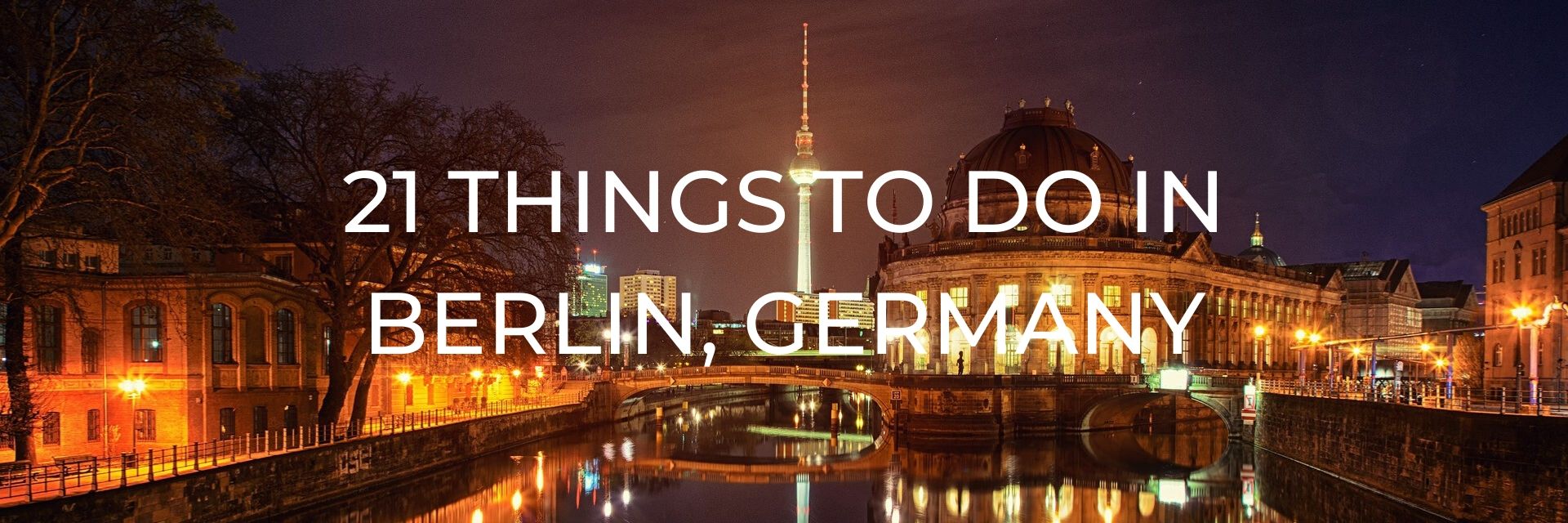
Few European cities have lived through as much upheaval and renewal as Berlin. It was founded in the 13th-century and has played a role as the capital of various kingdoms and republics since then. Berlin has then been largely defined by its tumultuous 20th century when it was Hitler’s capital in World War II and then in the postwar years became the front line of the Cold War when the East German government boxed in West Berlin within the Berlin Wall.
Today Berlin is a modern cosmopolitan and one of Germany’s liveliest cities and one of the most fascinating capitals in the world that is renowned for its diversity and tolerance. With edgy, gentrified streets, bars and cafés oozing with laid-back cool factor, and reminders of the city’s rich and turbulent history all around there is something for everyone in the German capital.
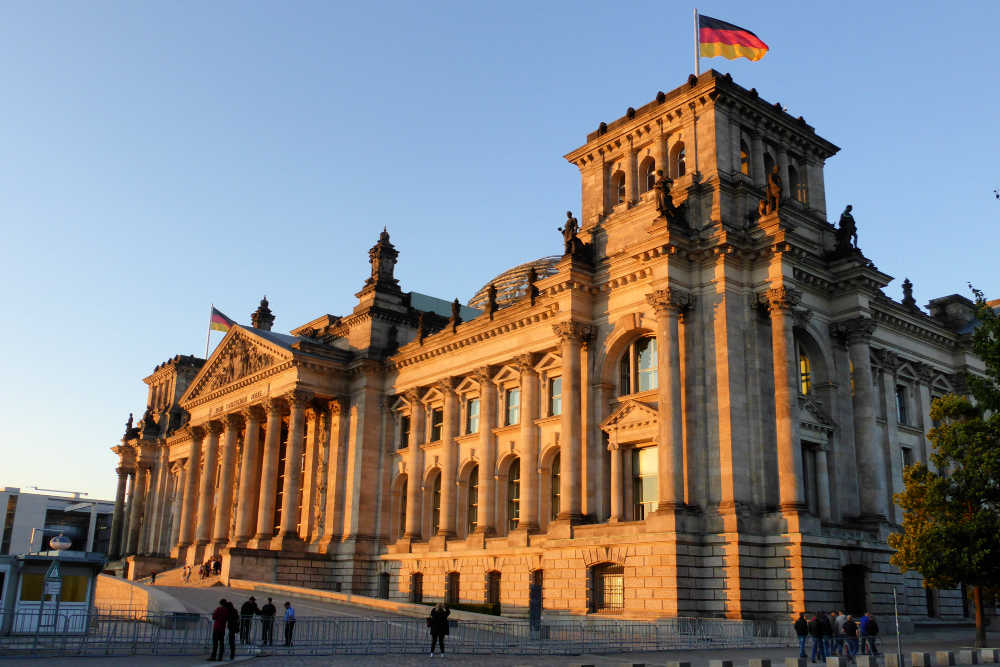
Berlin is yours for the wandering and exploring, but there are so many things to experience it can be hard to decide what to do first! We are here to help you.
We have rounded up 21 of the best things to see and do in Berlin to help you plan your own visit to this lively and energetic German city. We recommend you pick the things that interest you most and then leave yourself plenty of time to just take a stroll along the river and savour the history and culture of Berlin.
A map showing the location of everything can be found at the end of the post.
Want to save this for later? Click the Pinterest button on the left for a pinnable image!
This post may contain affiliate links. Please read our full disclosure policy here.
REICHSTAG
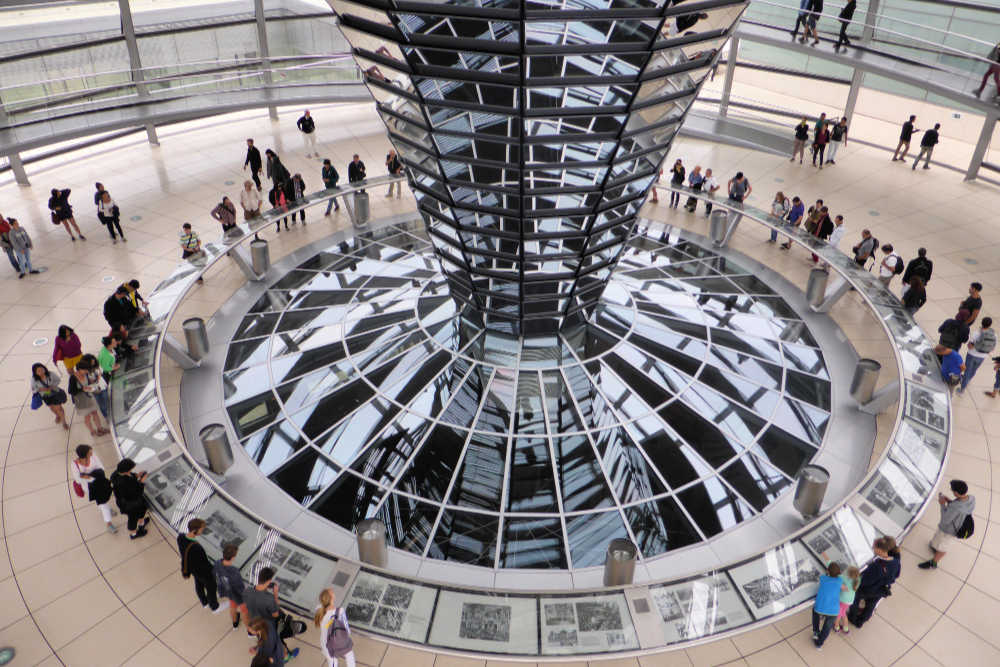
No other building is a more important symbol of Germany’s history than the Reichstag. The building has been burned, bombed, rebuilt, buttressed by the Berlin Wall, wrapped in fabric, and eventually turned into the home of Germany’s parliament, which is what it is today.
The Reichstag is one of the most popular sights to visit in Berlin and is one of the city’s most iconic buildings. The most distinctive feature is the glittering glass dome what was added to the roof that offers visitors spectacular 360-degree views of the city, both from inside the dome and outside on the rooftop at the base of the dome. From here you can see the Brandenburg Gate, just a short distance away, and you can trace the path that the Berlin Wall took in front of the gate and then behind the Reichstag.
Visiting the Reichstag, and going up in the dome, is free but you should reserve your space in advance to ensure your spot. When you visit, you’ll be given the use of a great audio guide that knows your location on the spiralling walkway up the dome so it can give you accurate information about that sites you can see from where you are standing.
Reviews of the Reichstag | Platz der Republik 1, 1011, Berlin, Germany
HELPFUL LINK:
- Register to book your space in advance to visit the dome. If you do not book in advance you can register to visit (at least two hours in advance) at the service centre nearby next to the Berlin Pavilion. You will need ID to visit and there may be limited times available, or no spots at all. We highly recommend you register in advance.
POTSDAMER PLATZ
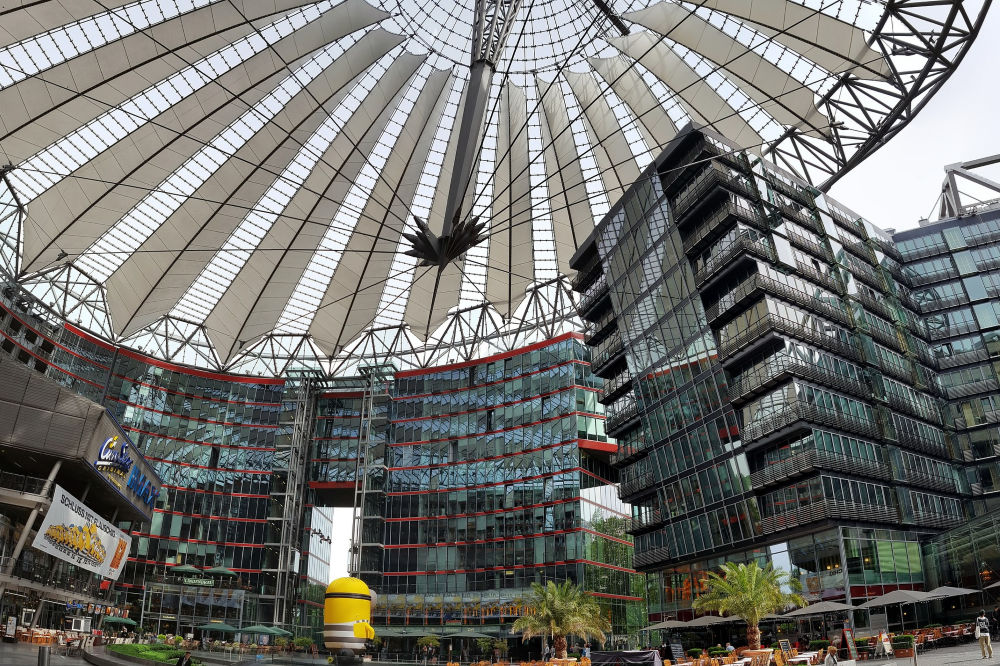
It’s been compared to “Times Square” in New York City with its tall glass skyscrapers, an underground station, and the modern Sony Centre covered in a unique canopy. Many restaurants, shops, and cinemas fill the are and make it a self-contained world of entertainment.
For a rainy day, to do some shopping, or just to have a little rest by the fountain and do some people-watching, Potsdamer Platz might be just the place to head while you are in Berlin.
Reviews of Potsdamer Platz | Potsdamer Platz Tiergarten, 10785 Berlin, German
SPREE RIVER CRUISE
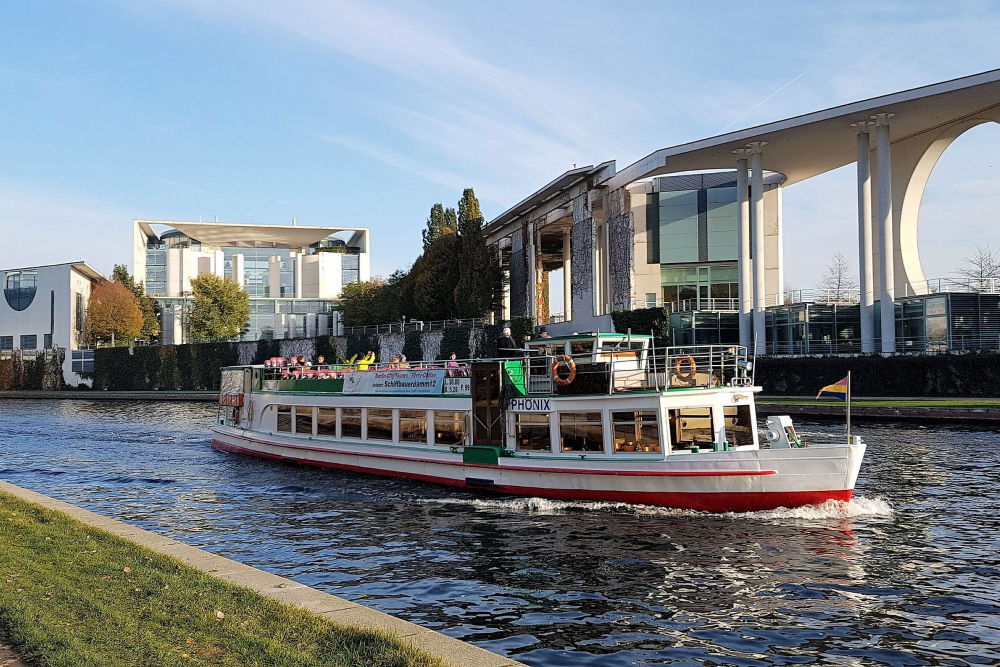
For a relaxing hour and the opportunity to see Berlin from the Spree River, consider taking one of the river cruises on offer.
Cruises can be one-hour to two and a half hours and can be time and money well spent. You’ll learn about the city and its history from informative commentary via audio guides, and see lots of new government-commissioned architecture, lovely parks, and well-known landmarks such as the Reichstag, Bellevue Palace, Berliner Dom, Museum Island, and more.
Many of the boats leave from docks clustered around the bridge near the Berliner Dom, so this would be a great addition to a morning or afternoon spent exploring the museums of Museum Island.
TIP: Before boarding, confirm that the boat you choose comes with English commentary unless you speak German.
Reviews of the Spree River Cruises | Check Departure Address for Your Cruise
IRON CURTAIN SIGHTS
Berlin was split in two by the Berlin Wall for decades, though the wall fell over thirty years ago, there is still much to see that is related to this dark time in the city’s history.
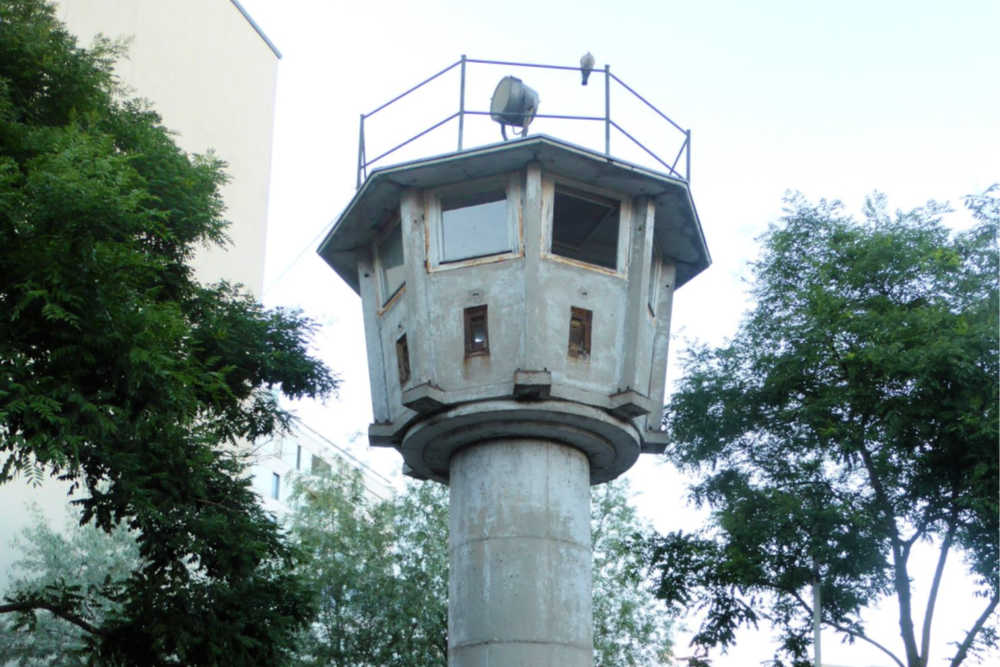
DDR WATCHTOWER
Once a common sight along the line of the Berlin Wall, the DDR Watchtower on Erna-Berger-Straße is now one of the last of its kind. The tower is synonymous with many of the sites people come to see from the time when Berlin was a divided city and the front line in the Cold War.
This tower was one of many such towers that were built in 1966 for panoramic surveillance and shooting with the rifle windows allowing shots to be fired in 360-degrees. These towers were manned constantly by two guards, but the guards were forbidden to even engage in small talk with each other. The rationale was that they could more effectively guard each other from escaping if they didn’t get to know one another.
Many pieces of the Berlin Wall have been distributed to museums around the world, so you don’t have to go to Berlin to see one. However, it is very poignant to see pieces of the wall as they stood back then. A piece of the wall is visible from the tower and it’s possible to climb the tower by making arrangements in advance.
Reviews of DDR Watch Tower | Erna-Berger-Straße, 10117 Berlin, Germany
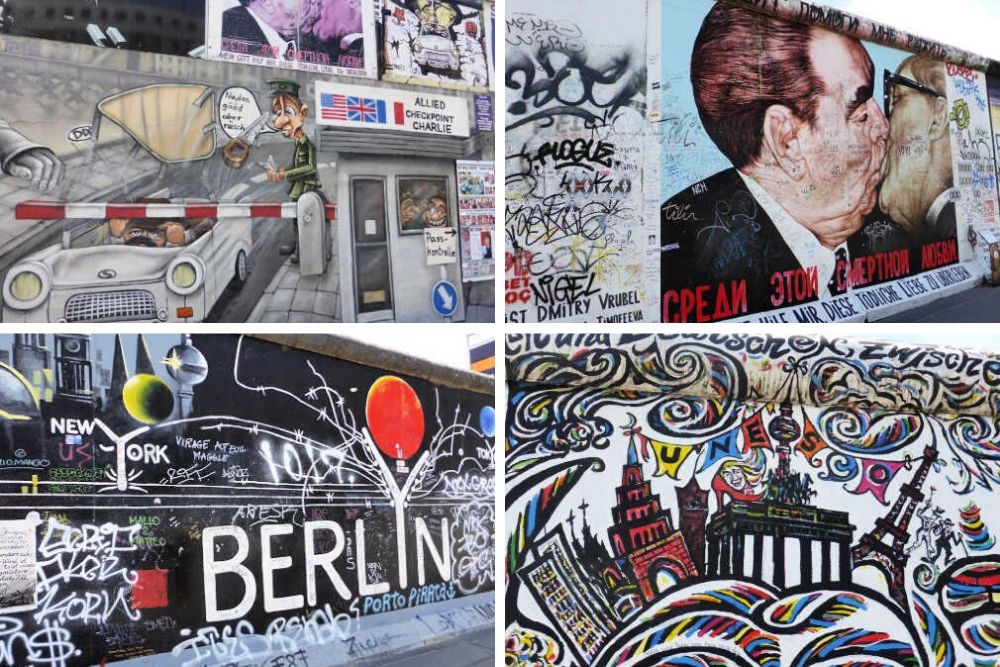
EAST SIDE GALLERY
It has been over 30 years since the Berlin Wall came down and much of its path is still marked by a double row of cobblestones and informational panels at key points in places where the wall has not been left standing. However, some portions of the wall have been preserved and left standing as a memorial to those who died trying to cross it. The East Side Gallery is one of these preserved sections.
This is a particularly unique part of the wall that runs along the Spree River for about 1.3 km and has become the world’s largest open-air mural collection. More than 100 international artists came together in the months after the fall of the Iron Curtain to create paintings that captured the optimism of the time in a mix of political statements.
Possibly one of the most famous murals is that tagged “My God, Help Me Survive This Deadly Love” which recreated a photo of the “embrace” between Leonid Brezhnev and Erich Honecker taken in 1979. It was originally painted in 1990, but sadly vandals destroyed the mural with graffiti.
In 2009 many of the murals were removed, and the original artists allowed to repaint them. It is a constant struggle to keep the murals from being desecrated with graffiti which means some portions of the wall have been partially fenced off now.
Reviews of East Side Gallery | Mühlenstraße 3-100, 10243 Berlin, Germany
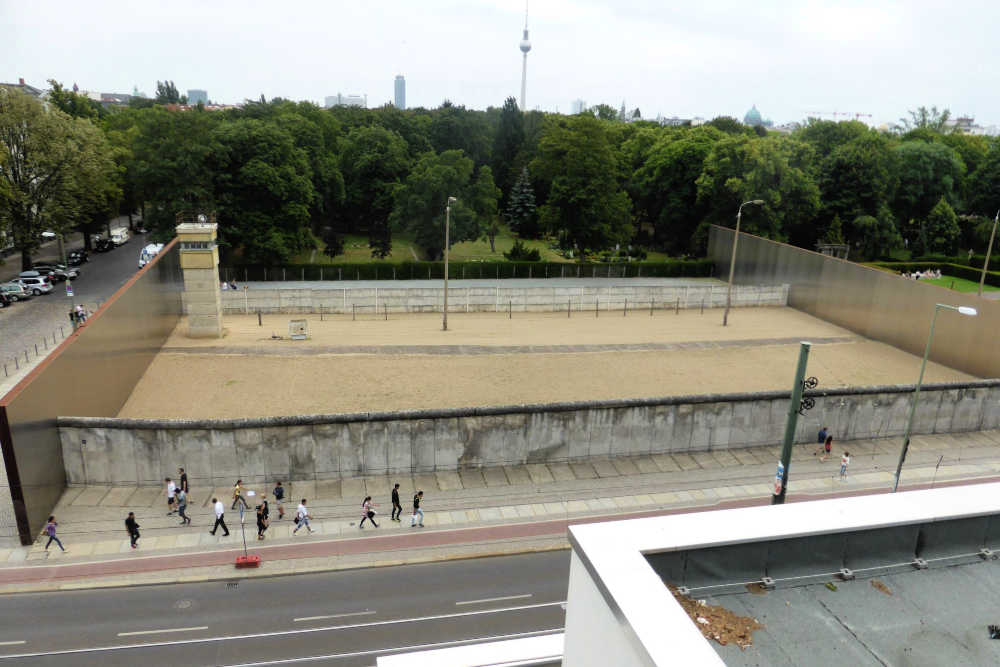
BERLIN WALL MEMORIAL
While there are pieces of the Berlin Wall all around the city, there is only one place where you can view two parallel walls plus the “death strip” between them and that is at the Berlin Wall Memorial. This is the city’s most substantial attraction related to the Wall with exhibits line the street for about four blocks to show the impact the Wall had on life in Berlin.
This memorial is across the street from the wall and allows you to climb to a platform that overlooks the walls so you can see the width of the “death strip” and the guard tower and defences used to stop people from crossing.
The accompanying museum has informational exhibits that show some of the horrific methods used to stop people from escaping to the West which included metal spike plates placed just inside the wall to impale anyone who had climbed over and jumped down.
Outside, along the length of the remaining sections of the Wall, you’ll find plaques and images that tell the stories of escape attempts and life in the city with the wall. This is free and well worth a visit.
TIP: Right nearby is the S-Bahn station Nordbahnhof which was a so-called “ghost” station when East Germany was known as the GDR (German Democratic Republic). This station has exits on both East and West Berlin sides which made it attractive for planned escapes, so the area had to be sealed off. The trains continued to travel through to the West, but they no longer stopped at Nordbahnhof.
Reviews of Berlin Wall Memorial | Bernauer Str. 111, 13355 Berlin, Germany
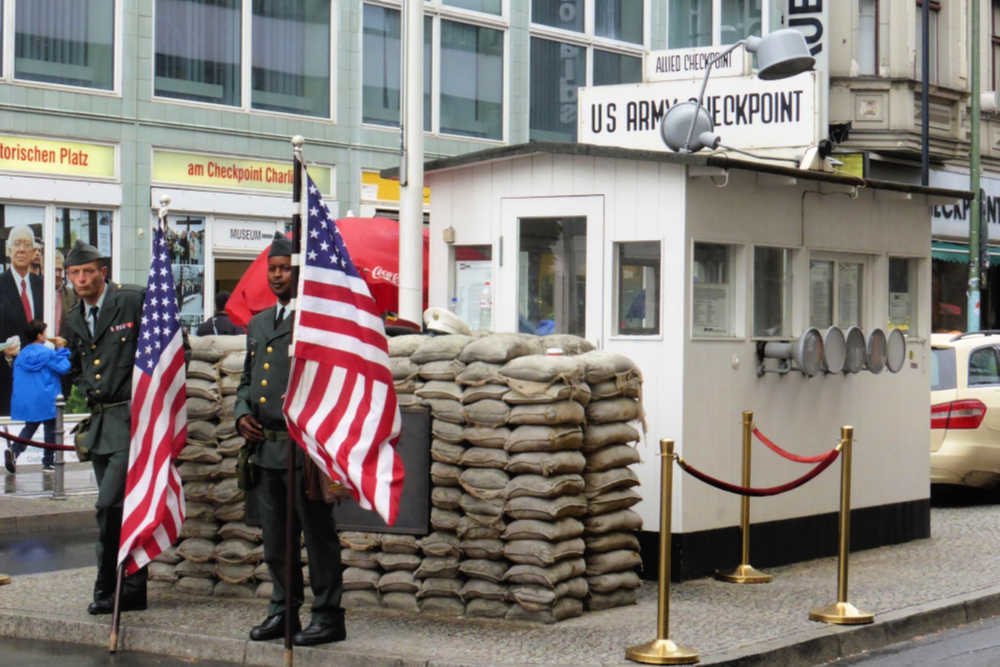
CHECKPOINT CHARLIE
Once the main gateway for foreigners and diplomats to cross between the two Berlins from 1961 to 1990, Checkpoint Charlie is a potent symbol of the Cold War that had, unfortunately, become a bit of a tourist trap.
The checkpoint wasn’t named for a person, but rather its checkpoint number as in Alpha (checkpoint #1 at the East-West German border), Bravo (checkpoint #2 as you enter Berlin proper), and Charlie, which is checkpoint #3.
The actual checkpoint has long since been dismantled and now is a reconstruction that, for many years, included people dressed as US “guards” to get your photo with. This practice was halted in 2019 though after “guards” were found to be verbally assaulting tourists.
While touristy, and a bit controversial, there is a free open-air exhibit nearby that is informational and illustrates milestones in Cold War history that you can visit after a quick photo stop at Checkpoint Charlie.
Reviews of Checkpoint Charlie | Friedrichstraße 43-45, 10117 Berlin, Germany
BRANDENBURG GATE
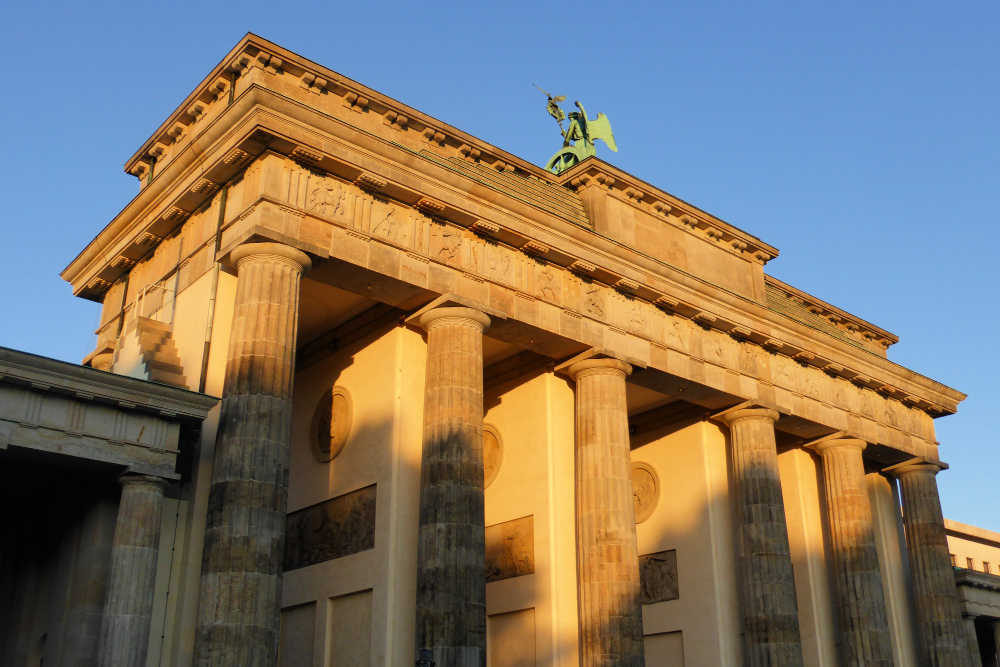
Built between 1788 and 1791 and inspired by the Parthenon in Athens, Brandenburg Gate is quite likely the best known of Berlin’s symbols. It stands proudly in the middle of Pariser Platz surrounded by modern and elegant embassy buildings and was a symbol of division during the Cold War but now epitomises German reunification.
The triumphal arch was the grandest and is now the last surviving, of Berlin’s 14 gates in the old city wall. It is crowned by the Quadriga sculpture which is the winged goddess of Victory piloting a horse-drawn chariot.
The Brandenburg Gate has been the backdrop for many events in the city’s turbulent history. For many years after World War II, the gate just sat behind the Berlin Wall and for nearly 30 years no one passed through it. It was in the plaza on the western side of the gate that President Reagan famously called on Mikhail Gorbachev to “…tear down this wall.” The Wall did fall two and half years later and the Brandenburg gate now stands as a symbol of unity in Berlin and is open for all to pass through it and admire its grandeur and beauty.
Reviews of Brandenburg Gate | Pariser Platz, 10117 Berlin, Germany
UNTER DEN LINDEN
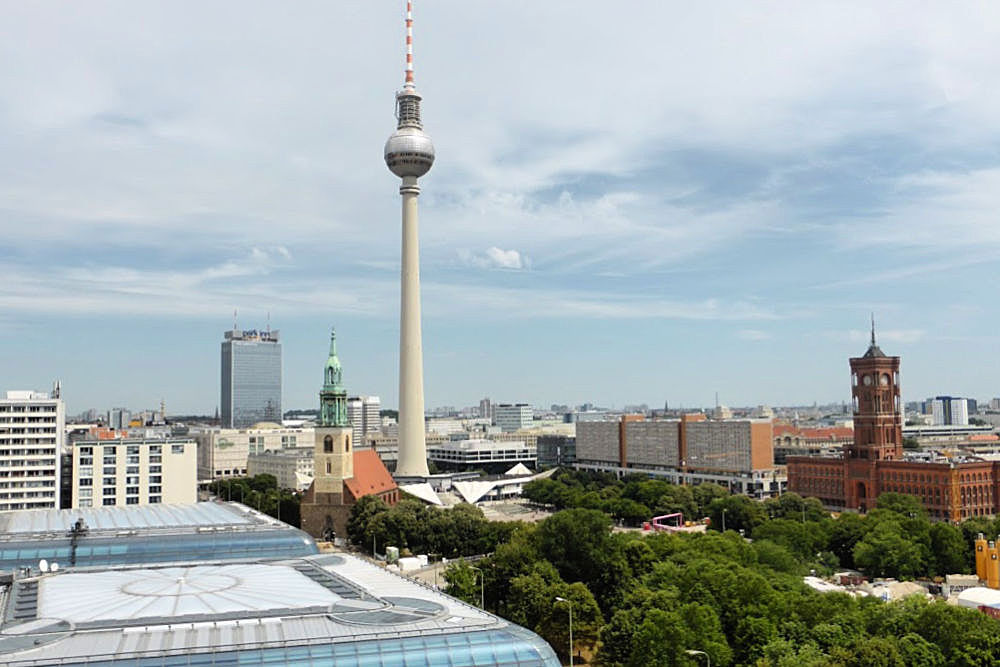
Once one of Europe’s grand boulevards, Unter den Linden was a carriageway in the 15th-century that led from the palace to the hunting grounds (what is today’s Tiergarten). It was named for the thousands of linden trees that lined it and was the most elegant street of Prussian Berlin.
The beautiful trees were then removed by Hitler and replaced with Nazi flags but public discontent actually persuaded him to replant the trees. Today we can only imagine its pre-war grandeur but it is still a beautiful stroll past important historic buildings such as the State Opera House and Humbolt University, which has educated 29 Nobel Prize winners, including Albert Einstein. There are also many little cafés enticing those passing by to stop and relax for a moment or two.
As you walk along the leafy boulevard, be on the lookout for the DDR-style pedestrian lights with perky red and green men called “Ampelmannchen”. They were slated to be replaced but have been kept after a 10-year court battle!
This would be a great start to a visit to Berlin to get an overview of the city and see some of the main sites that you’ll want to visit later in the weekend. You could end your walk at the TV Tower with dinner in the restaurant 207 m above the city that revolves once per hour for 360° views.
Reviews of Unter den Linden | Unter den Linden, Berlin, Germany
HELPFUL LINK
- A free Berlin City Walk by Rick Steves that includes a stroll along Unter den Linden. This can be downloaded to his Audio Europe app or listened to on a podcast. It also comes with a helpful map that can be printed off.
TIERGARTEN
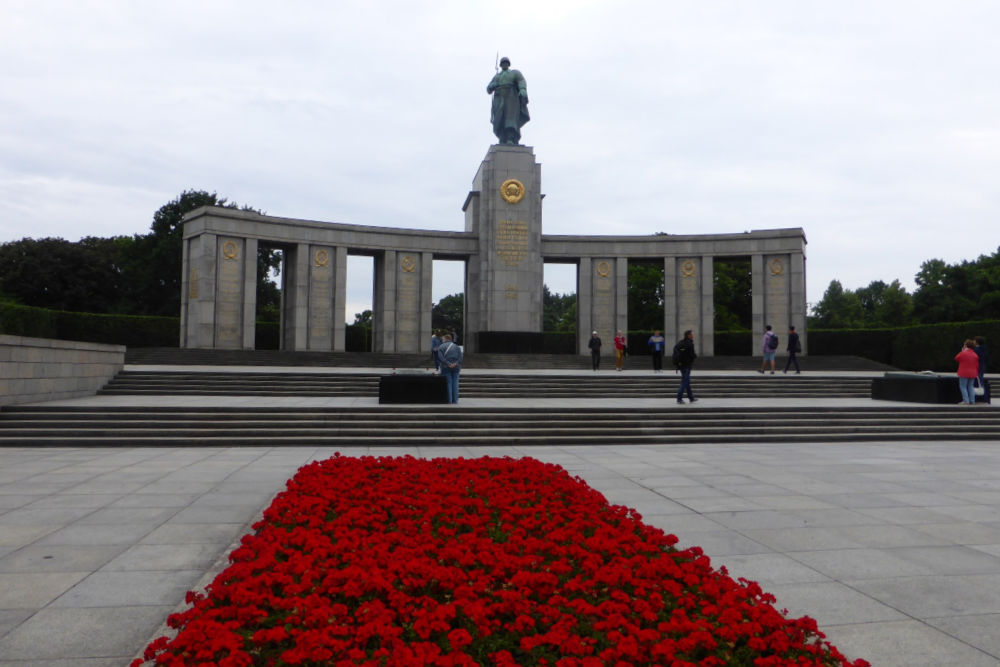
Ideal for a stroll, picnic, or other outdoor activities, the Tiergarten one of Europe’s largest city parks and makes for a perfect sightseeing break. Situated near the Reichstag, the park was once the hunting ground for the Electors of Brandenburg but what we see today was designed in the 1830s by Prussia’s leading landscape designer who was inspired by English gardens.
The garden was badly damaged during WWII and then it suffered even more in the wake of the war when Berliners nearly deforested the area from cutting the park’s trees down to use for heating. Thankfully in 1949, the park was replanted with trees given as donations from all over Germany.
Not only does the park offer tree-lined paths and open green spaces, but you can also find many memorials, cultural and political sights such as the Soviet War Memorial, Global Stone Peace Project, and Victory Column. In the summer visitors on a Sunday just might hear the bells played by a carillon too from the tower that soars 42 meters high with 68 bells.
Reviews of Tiergarten | Strasse des 17 Juni 100, 10557 Berlin, Germany
HOLOCAUST MEMORIALS
Berlin and Germany do a fantastic job at confronting the dark period in its history that was World War II and the millions of innocent people killed. Monuments to this dark time can be seen around Berlin.
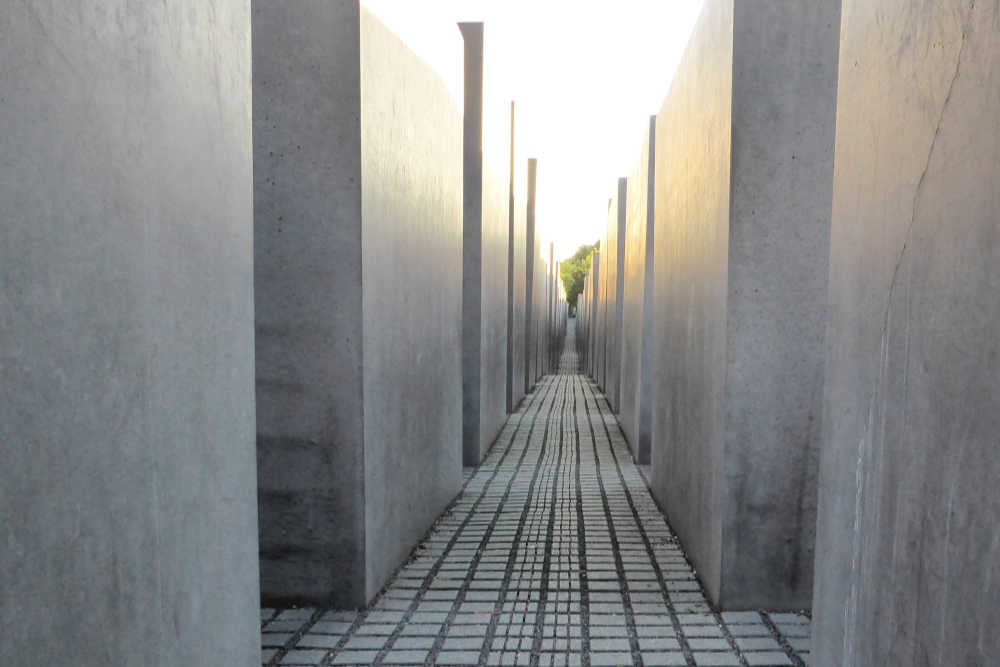
MEMORIAL TO THE MURDERED JEWS OF EUROPE
The enormous Memorial to the Murdered Jews of Europe takes up an entire city block and is made up of 2711 stelae, or blocks, from 8 inches to 15 feet in height set on undulating ground. The scale is impressive and walking through it is a strange experience, which is apparently what the artist intended. Interestingly, the official title of the monument “Memorial to the Murdered Jews of Europe” doesn’t mention the Holocaust. It is undeniably impressive to give over a city block in your capital city to such an atrocious event from your country’s past.
Beneath the memorial is a museum you can access from the South West corner. The museum is quite small, but worth a visit alongside the memorial, it is underneath. Two things which attracted our attention were a plaque expressing similar sentiments to “Those who forget history are liable to repeat it” and a room which projects the names of people who were killed in the holocaust on the walls; to sit and watch this screen until it repeated would take six years, seven months, and 27 days.
Reviews of the Memorial to the Murdered Jews of Europe | Cora-Berliner-Straße 1, 10117 Berlin, Germany
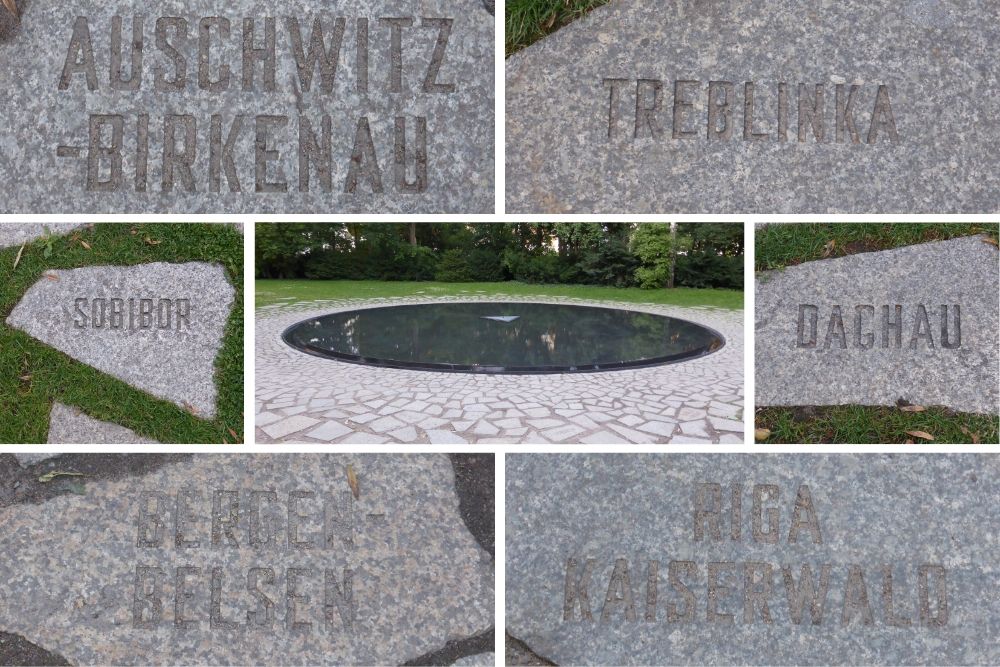
MEMORIAL TO THE SINTI AND ROMA VICTIMS OF NATIONAL SOCIALISM
Between the Reichstag and the Brandenburg Gate is the Memorial to the Sinti and Roma Victims of National Socialism. Unveiled in 2012 it remembers the roughly 500,000 Sinti and Roma victims of the Holocaust.
The memorial is a garden with a reflecting pool in the centre surrounded by stone slabs. On some of these stones, you’ll find the names of death camps, such as Auschwitz-Birkenau, Bergen-Belsen, and Dachau, where so many perished.
In the water, along the rim of the pool is a heart-wrenching poem called “Auschwitz”. A fresh flower is also placed daily in the centre of the pool on a triangular stone, which represents the badges worn by concentration camp prisoners.
Reviews of the Memorial to the Sinti and Roma Victims of National Socialism | Simsonweg, 10117 Berlin, Germany
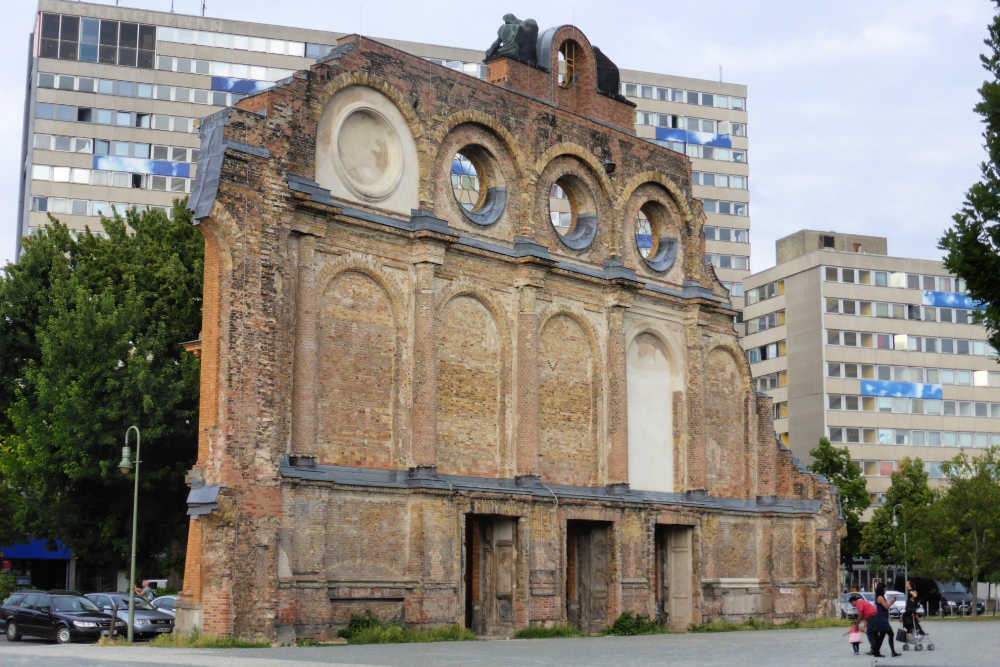
ANHALTER BAHNHOF
Anhalter Bahnhof (Anhalter Station) was the first station used to deport Jews from Berlin to concentration camps. This was done 116 times and 9,600 people left Berlin from this station in extra wagons hitched to the back of scheduled trains leaving for Theresienstadt.
Only the yellow stars on their clothing and being surrounded by armed guards singled them out from the other passengers boarding the train. It seems unbelievable that this was done in full view of the public.
The station was severely damaged in World War II and today just the façade is still standing of what was once one of Berlin’s most important railway stations. It was finally closed for traffic in 1952 when the GDR rerouted all railway traffic between Berlin and places in the GDR avoiding the West Berlin area.
Reviews of Anhalter Bahnhof | Stresemannstrasse, 10963 Berlin, Germany
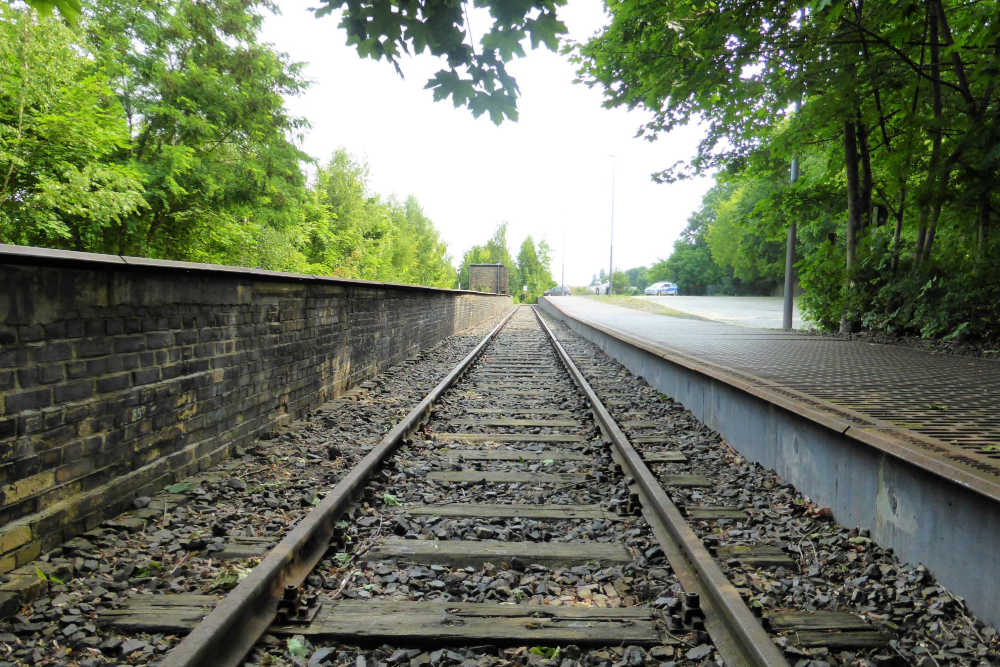
TRACK 17 AT GRUNEWALD STATION
Located on the western outskirts of Berlin, Grunewald Station, and specifically, Gleis 17 (Platform 17), was one of the main stations used for deportations to concentration camps. Over 50,000 Berlin Jews were forced into the railcars and sent to the ghettos in Eastern Europe, such as Lodz, Litzmannstadt, and Warsaw, or the concentration camps Auschwitz and Theresienstadt. There were 35 trains that took 17,000 Jews directly to Auschwitz from Gleis 17.
The memorial at Gleis 17 was initiated by the Deutsche Bahn, the German national railway company, in January 1998. At the edge of the platform are dozens of metal grates showing the date each deportation train left, the number of people on it, and which camp they were sent to. It is a sombre monument of such a dark period in human history with the trees around the platform left to grow as a reminder that no train will ever depart from this platform again.
Reviews of Gleis 17, Grunewald | S7, Grunewald, Berlin, Germany
BERLINER DOM
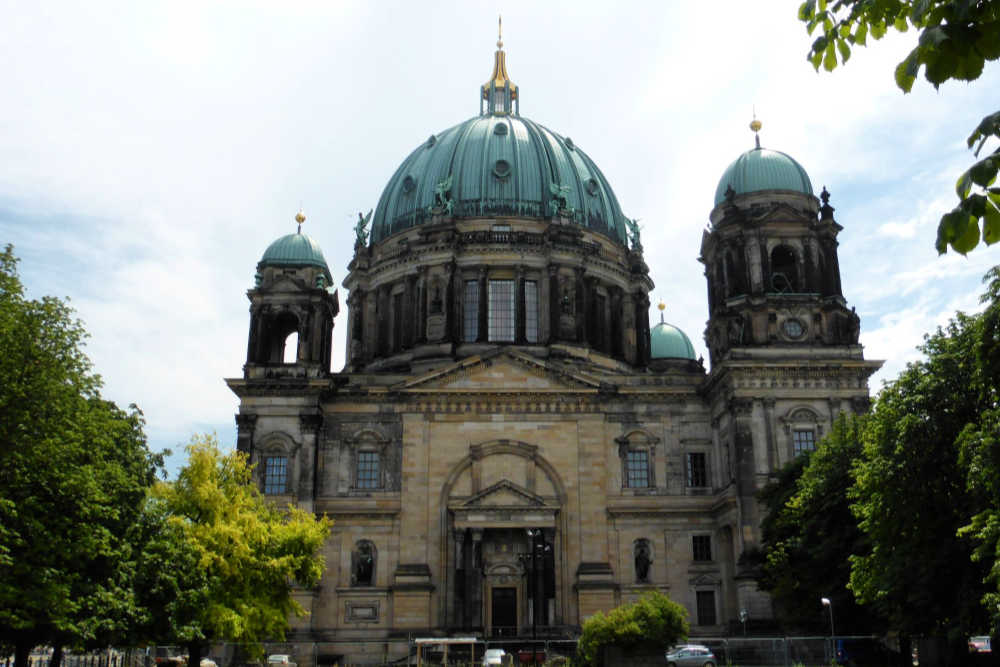
Situated on Museum Island along the Spree River, the Berliner Dom (Berlin Cathedral) is the city’s grandest and most important Protestant church as well as the sepulchre of the Prussian Hohenzollern dynasty. Built between 1894 and 1905, it was heavily damaged in the war and only reopened in 1993.
To say the outside needs a good clean is an understatement, compared with the gleaming stone of the Brandenburg Gate and the Reichstag, the Berliner Dom was undeniably grimy when we visited. But don’t let that put you off, because when you walk inside and see the interior, it could not be more different. Our jaws most definitely dropped at how stunning it was. We’ve deliberately not included a picture of the inside so you can experience it for yourself. Seriously don’t Google it, just see it for the first time as we did.
Inside you’ll find over ninety sarcophagi and tombs of the Prussian Kings- Friedrich I and Sophie Charlotte cast beautifully in gold-plated tin and lead. The organ has over 7,000 pipes and is one of the largest in Germany. Knowing how the singing of a boys choir filled the church during our visit we can only imagine how beautiful the organ would sound when played.
After visiting the interior, you can climb the 270 steps (sometimes quite steep and narrow) to view both the interior of the church from the gallery or the river and surrounding area when walking outside around the dome.
Reviews of Berliner Dom | Am Lustgarten, 10178 Berlin, Germany
HELPFUL LINKS:
- The Berlin WelcomeCard can be used to save money on the admission to the Berliner Dom. We found this to be a convenient option, especially for the included public transport, during our time in Berlin. The Berliner Dom is also included on the Berlin Pass.
MUSEUM ISLAND
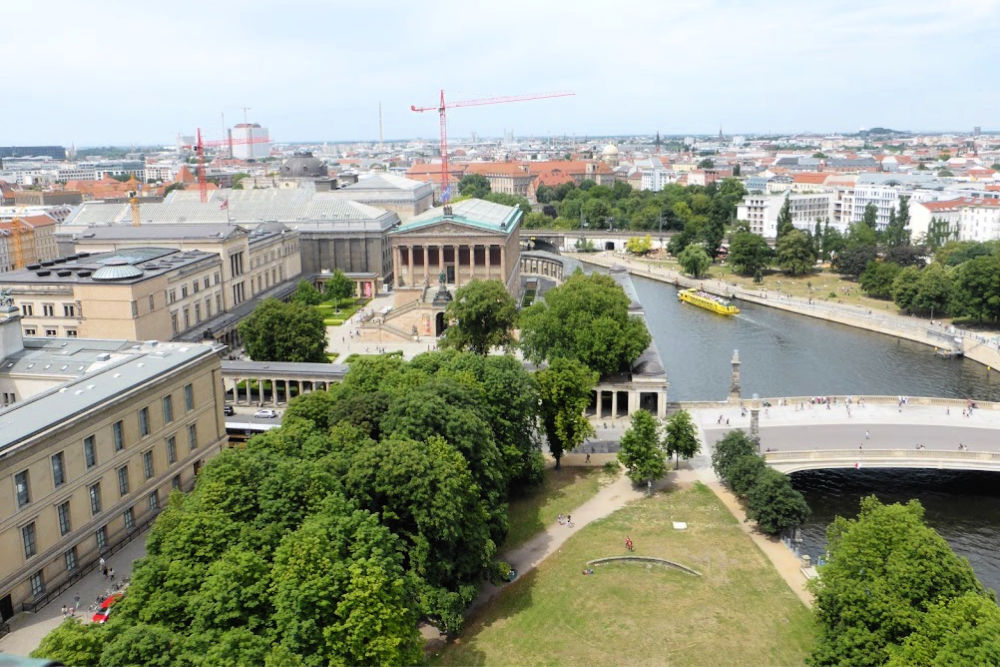
Situated in the Spree River, Museum Island (Museumsinsel) houses a unique collection of galleries and museums within its five temple-like buildings. The treasures on the island span 6,000 years of human history – it’s no wonder it was given UNESCO World Heritage status in 1999.
The five museums you can visit are:
- Pergamon Museum (Pergamonmuseum): This is the largest on the island and houses the Ishtar Gate which dates back to the 6th century BC, and the Pergamon Altar from 160 BC.
- Bode Museum: Situated at the northern tip of the island, this museum displays Byzantine art and medieval to eighteenth-century sculptures.
- New Museum (Neues Museum): Severely damaged in WWII, it remained a ruin until 1999 when it was rebuilt and refurbished. Today it holds the city’s impressive Egyptian collection which includes Berlin’s most famous exhibit – a 3,300-year-old bust of Nefertiti.
- Old National Gallery (Alte Nationalgalerie): This museum houses a collection of nineteenth-century European art.
- Old Museum (Altes Museum): Opened in 1830, this museum is the oldest on the island and focuses on Greek and Roman antiquities.
Reviews of Museum Island | Breite Street, 13089 Berlin, Germany
HELPFUL LINK:
-
To save money in Berlin, check out the Berlin WelcomeCard to see if the sights you’d like to visit are included and if it makes sense to bundle them together. Most of the museums on Museum Island are included on the pass.
NEUE WACHE
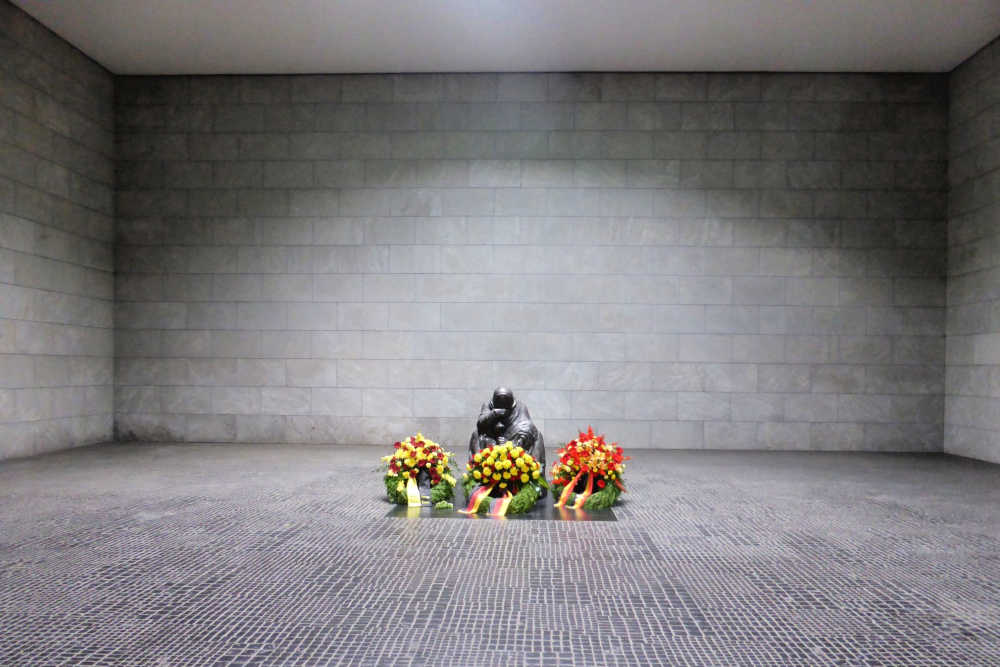
Once the emperor’s “New Guardhouse” from 1816, the Neue Wache is a war remembrance building that was also a centre for East German soldiers during the Cold War. It was converted by communist authorities in 1960 to a memorial to the victims of fascism and then transformed again, after the fall of the Berlin Wall, to a national memorial for the victims of war and dictatorship.
The inscription on the front reads “To the victims of war and tyranny” and marks the tombs of Germany’s unknown soldier and unknown concentration camp victim.
It would appear you can sometimes go inside, but in some respects, it’s better when locked, as the only thing to see inside, is the central statue called “Mother with Her Dead Son”. The small statue in the empty room is very simple, yet sombre and provides a place of calm and reflection in the middle of the busy city.
Reviews of Neue Wache | Unter den Linden 4, 10117 Berlin, Germany
WORLD WAR II SIGHTS
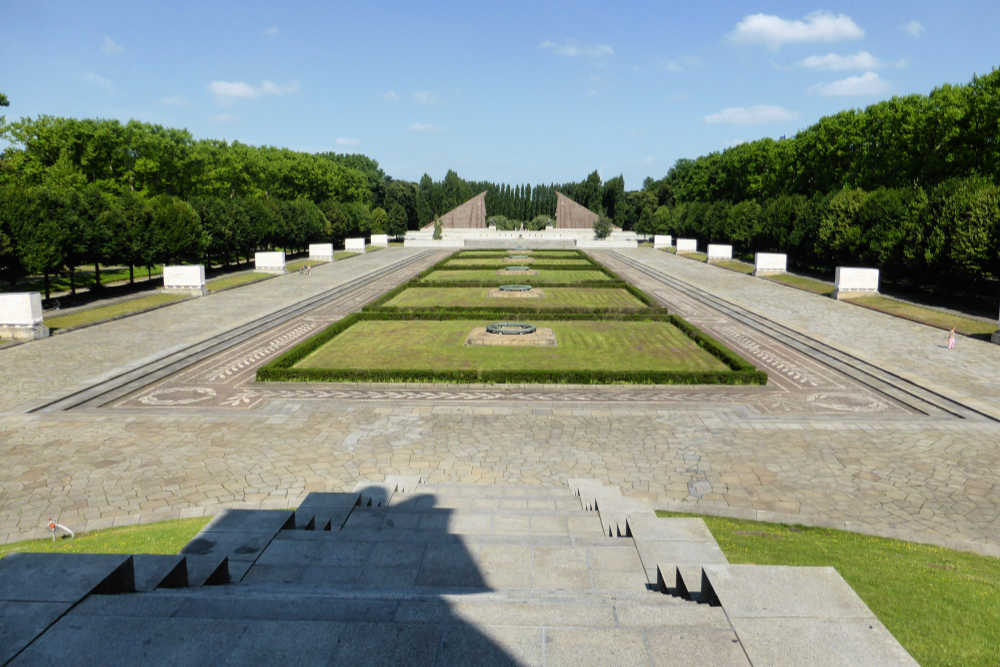
SOVIET WAR MEMORIAL
The Soviet War Memorial is a huge site that makes up a large part of the centre of Berlin’s Treptower Park. The entrance is dominated by two large triangular walls bearing the hammer and sickle. In front of each, is a statue of a soldier on one knee, with his head bowed and holding his helmet in one hand and a machine gun in the other.
Walking between the two walls, you enter an open expanse this is mostly paved. There are five identical lawns down the centre flanked by large panels depicting Soviet patriotic scenes.
At the opposite end of the memorial from the triangular walls is a monument of a soldier standing atop holding a sword in one hand and carrying a small child in the other. The interior of this monument has a beautiful mosaic around the inner wall which you can view through the entrance gate.
This is a strange monument now as it commemorates the efforts during World War II of a country which no longer exists as a single entity.
Reviews of Treptower Park | Alt-Treptow, 12435 Berlin, Germany
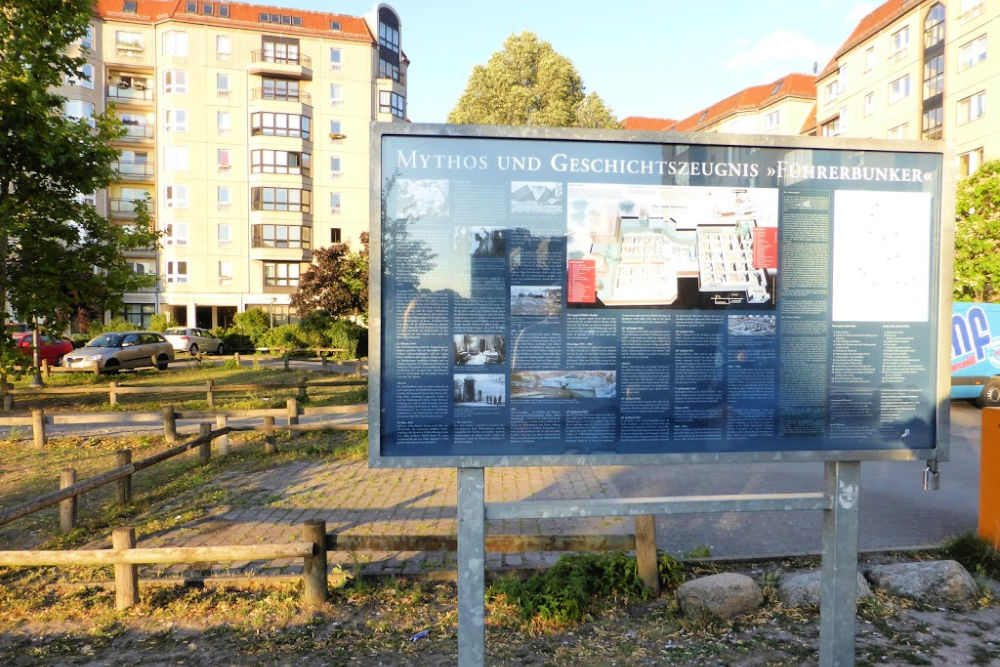
FUHRERBUNKER
The Führerbunker (also known as ‘Hitler’s Bunker’) is located right behind where the former Reich Chancellery once stood. It was the place where Hitler and other high-ranking Nazi officials worked near the end of World War II. It is also where Hitler and his wife committed suicide on April 30, 1945, as Berlin was burning and Soviet tanks were bearing down on the city.
Rather than letting Hitler’s final stronghold become a major tourist attraction or a focal point for neo-Nazis, the bunker was essentially destroyed. The roof was removed and the bunker filled with dirt and then covered over. Today a parking lot covers the site.
An information panel in the parking lot reveals the dark history that took place on the spot. It shows a diagram of the vast bunker network, construction data, and the site’s post-WWII history.
Reviews of Hitler’s Bunker (Fuhrerbunker) | Wilhelmstrasse 77, 10117 Berlin, Germany
JEWISH MUSEUM
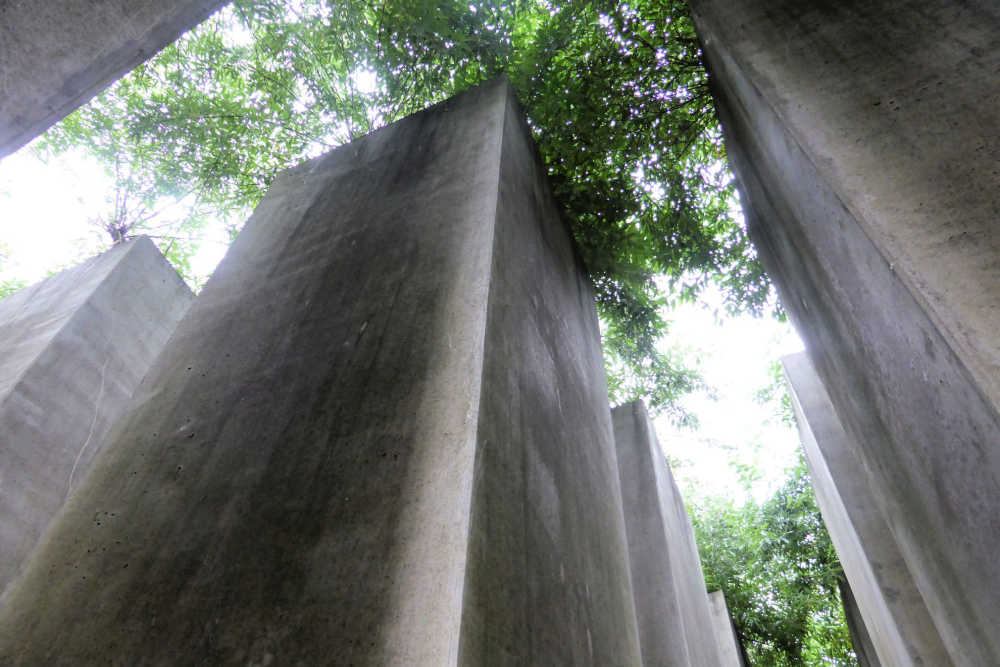
In the landmark building designed by American-Polish architect David Liebeskind, you’ll find one of Europe’s best Jewish sights – the Jewish Museum. The museum tells the stories of the trials and triumphs of 2,000 years of Jewish history in Germany from the Middle Ages, to the Enlightenment, to the community’s current renaissance.
Here you can learn about Jewish cultural contributions, holiday traditions, and achievements of outstanding individuals. Exhibits and artefacts cover a broad range – from the information you might expect in a museum such as Jewish street signs and a roll of fabric that the stars Jews were forced to wear were cut from, to modern art exhibits like the room of metal faces (that you can walk on) and the oddly disorienting “Garden of Exile” which contains 49 tall concrete columns to wander between.
This is certainly a very interesting and informative museum and one we would encourage you to consider when planning the things you want to see and do in Berlin.
Reviews of the Jewish Museum | Lindenstrasse 9-14, 10969 Berlin, Germany
TOPOGRAPHY OF TERROR
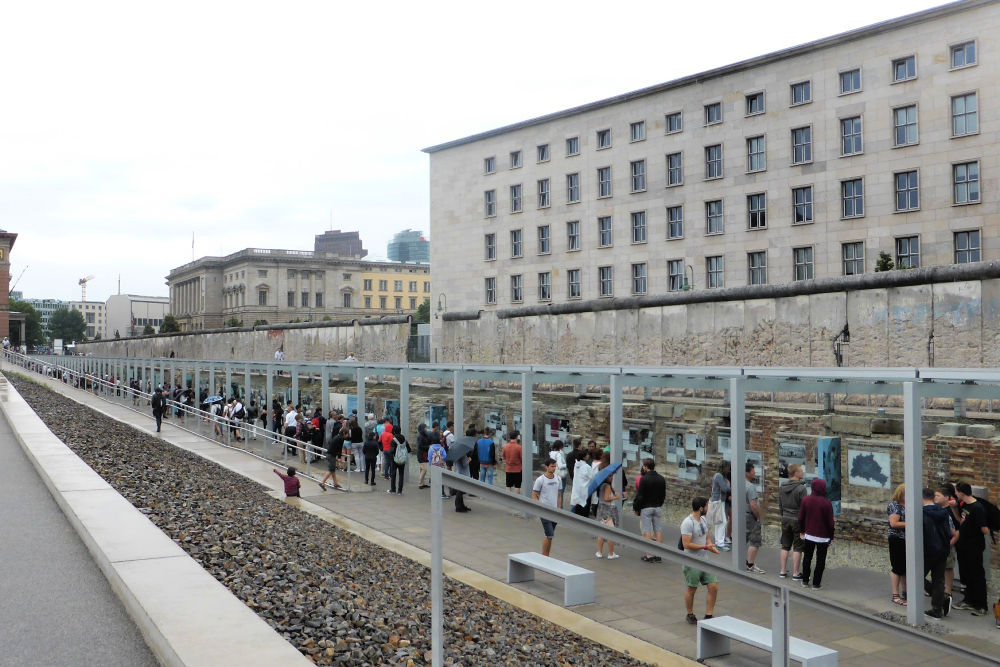
The Topography of Terror is both and indoor and outdoor museum located on the former site of the Gestapo and the SS headquarters, two of the most feared institutions of Nazi Germany.
The outdoor gallery is located in the trenches excavated along Niedkirchnerstrasse and focuses on Berlin’s role as the capital of the “Third Reich”. The panels along its length describe how life changed for Berlin and its people after the Nazis made it their capital.
Inside there are few actual artefacts but instead is mostly written explanations and photos. The exhibits tell in-depth chilling stories of the stages of terror and persecution, puts a face on the perpetrators and their crimes, and describes the impact these institutions had on all of Europe.
There is so much to see and read here that we’d recommend you allow yourself a couple of hours for your visit. It is quite sombre and heavy so take your time and then consider a break afterwards to absorb and process what you’ve read and seen.
Reviews of the Topography of Terror | Niederkirchnerstrasse 8, 10963 Berlin, Germany
Want to save this for later? Click the Pinterest button on the left for a pinnable image!
RESOURCES | PLAN YOUR TRIP TO BERLIN
To book flights, rental cars, accommodations, and activities for your trip, please check out our recommended travel providers, favourite apps and websites.
Some of the links in the post above are affiliate links. This means if you click on the link and purchase the item, we will receive an affiliate commission but this does not affect the price to you. Please read our full disclosure policy here.
